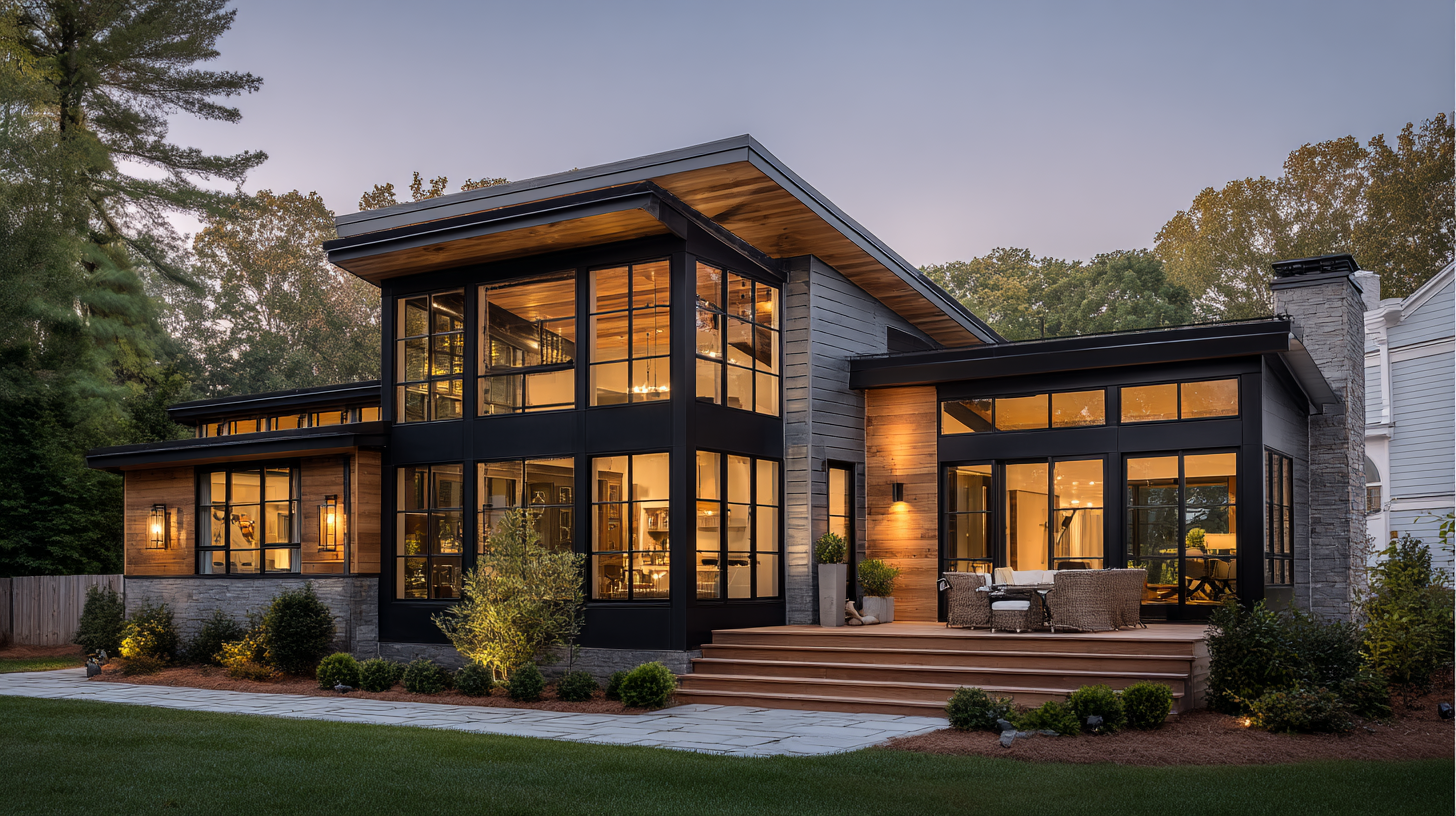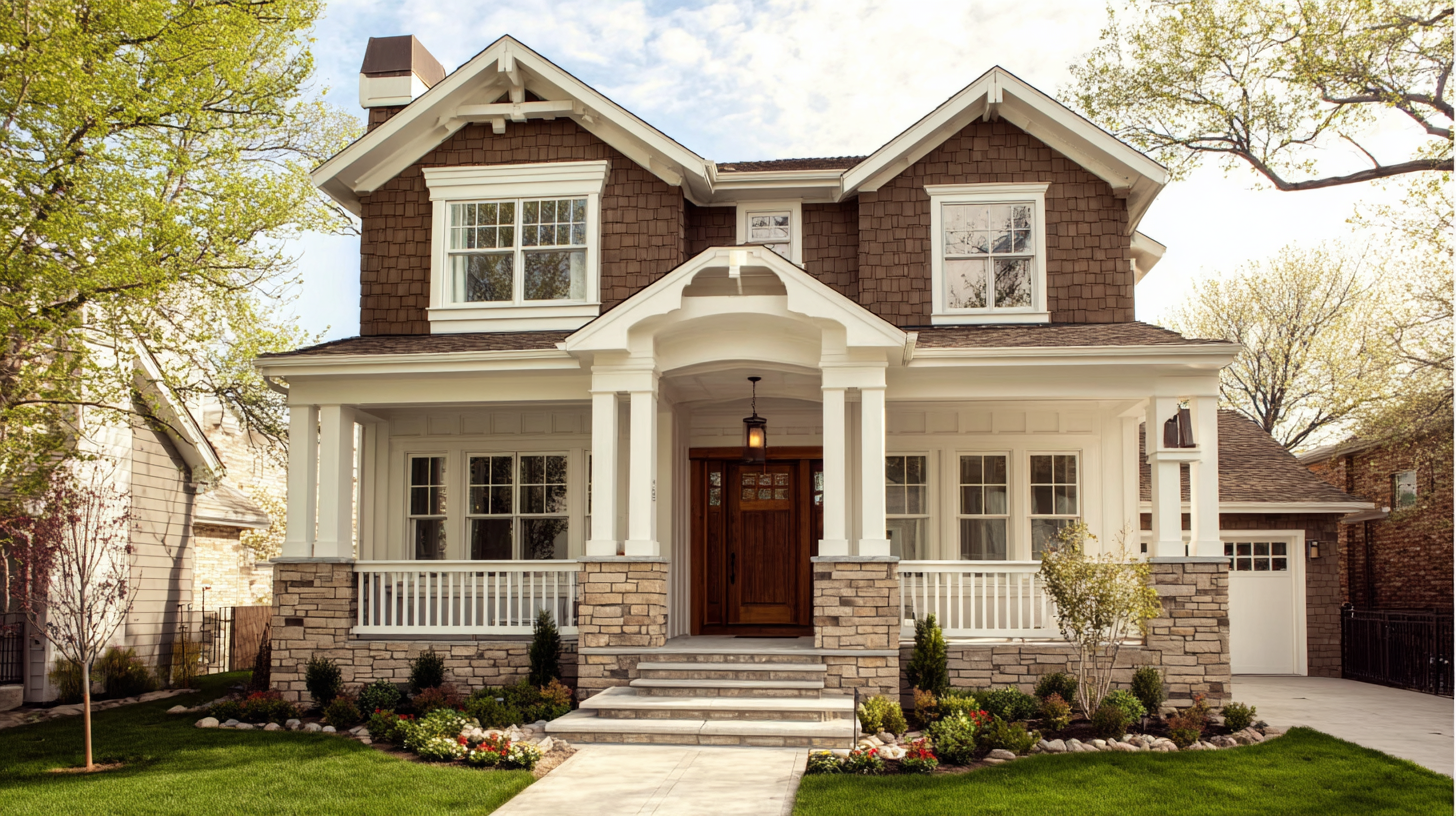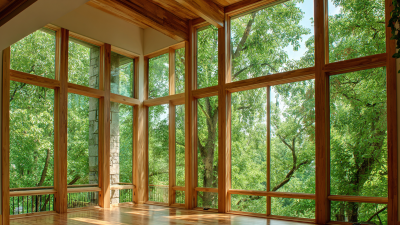How to Choose the Right Windows for Your House Based on Energy Efficiency
When selecting windows for your house, energy efficiency should be a primary consideration due to its significant impact on overall home performance and utility bills. According to the U.S. Department of Energy, residential heating and cooling account for nearly 50% of a home's energy consumption, with windows playing a crucial role in this equation. The right choice of windows can reduce energy costs by 15% to 20%, making it vital for homeowners to understand the different types available. Whether opting for double or triple glazing, Low-E glass coatings, or gas fills, each option offers distinctive benefits that contribute to thermal performance. With the growing emphasis on sustainable building practices, selecting energy-efficient windows not only advances personal comfort but also fosters environmental responsibility. Thus, understanding the various aspects of energy efficiency is essential in making an informed decision for your home.

Table of Contents
[Hide]
Understanding the Importance of Energy Efficient Windows
 Energy efficiency is becoming increasingly crucial in residential construction, particularly when it comes to selecting windows that reduce energy consumption. According to recent studies, including findings from the Energy Performance of Buildings Directive, 55% of the EU's emission reductions will rely heavily on renovating the least efficient buildings. This underscores the need for homeowners to consider energy-efficient windows not only for their comfort but also as a strategic investment in sustainability.
Energy efficiency is becoming increasingly crucial in residential construction, particularly when it comes to selecting windows that reduce energy consumption. According to recent studies, including findings from the Energy Performance of Buildings Directive, 55% of the EU's emission reductions will rely heavily on renovating the least efficient buildings. This underscores the need for homeowners to consider energy-efficient windows not only for their comfort but also as a strategic investment in sustainability.
Research indicates that energy-efficient windows can significantly decrease heating and cooling costs, enhancing overall household energy efficiency. For instance, smart window technologies integrated with building systems can lead to considerable energy savings, as they respond to environmental changes. In educational buildings, smart technologies have shown to effectively reduce energy waste by aligning with occupant behavior, which can be extrapolated to residential settings. Properly chosen windows can act as a barrier against heat loss during winter and excess heat during summer, showcasing their importance in achieving a comprehensive energy-efficient home.
Types of Energy Efficient Windows Explained
When it comes to enhancing energy efficiency in your home, selecting the right windows is essential. There are several types of energy-efficient windows that offer various benefits and features. For instance, double-glazed windows can reduce heat loss by up to 50%, according to the U.S. Department of Energy. These windows have two panes of glass separated by a gas-filled space, which insulates your home more effectively than single-pane options.
Another option to consider is Low-E (low emissivity) glass, which reflects heat back into your home during winter while keeping unwanted heat out in the summer. This type of glass can improve thermal performance by up to 30% to 50% compared to standard glass, making it an excellent choice for maintaining a comfortable indoor temperature year-round.
**Tips:** When selecting windows, pay attention to the Windows Energy Rating label, which indicates how well the window insulates. Additionally, consider your local climate when choosing window types; for instance, homes in colder climates benefit significantly from triple-glazed windows compared to those in milder areas. Always consult with a professional to determine the best energy-efficient window solutions tailored to your specific needs.
Energy Efficiency Ratings of Different Window Types
How to Assess Your Home’s Energy Needs for Window Selection
When assessing your home’s energy needs for window selection, it's crucial to understand how different types of windows can affect your overall energy consumption. Conducting a thorough evaluation of your home’s current energy performance is a vital first step. Utilize resources like the Residential Energy Consumption Survey, which provides state-level estimates on energy usage, to identify patterns and potential areas for improvement. This data can guide you in choosing window styles that enhance insulation and reduce heating and cooling costs.
Furthermore, consider integrating innovative solutions such as dynamic overhang systems that help manage solar heat gains. These systems can significantly improve energy efficiency by minimizing unwanted solar heat, especially in regions with extreme temperatures. Such smart remodeling strategies not only contribute to comfort but also align with broader efforts toward carbon neutrality in urban areas. By carefully evaluating and selecting the right windows based on your home's unique energy needs, you can create a more sustainable and comfortable living environment.
How to Choose the Right Windows for Your House Based on Energy Efficiency - How to Assess Your Home’s Energy Needs for Window Selection
| Window Type | U-Value (W/m²K) | Solar Heat Gain Coefficient (SHGC) | Visible Transmittance (VT) | Estimated Energy Savings (%) |
|---|---|---|---|---|
| Single Glazed | 5.0 | 0.85 | 0.90 | 0% |
| Double Glazed | 2.0 | 0.70 | 0.80 | 20% |
| Low-E Double Glazed | 1.6 | 0.50 | 0.70 | 30% |
| Triple Glazed | 1.0 | 0.40 | 0.60 | 40% |
| Gas-Filled Double Glazed | 1.8 | 0.55 | 0.75 | 25% |
Evaluating Window Materials for Optimal Insulation
When selecting windows for energy efficiency, the choice of materials plays a pivotal role in insulation effectiveness. Common materials include vinyl, wood, aluminum, and fiberglass, each possessing unique properties that influence thermal performance. Vinyl windows, known for their excellent insulation and affordability, often come with multiple chambers that trap air, reducing heat transfer. Wooden frames provide a classic aesthetic while naturally insulating, though they require regular maintenance to prevent rot and enhance durability.
Aluminum windows, while sturdy and low-maintenance, tend to be less efficient due to their high thermal conductivity. However, options with thermal breaks—insulating barriers between the inside and outside of the frame—can enhance their energy performance. Fiberglass windows are among the best choices for insulation, offering exceptional strength, durability, and resistance to warping. Additionally, they can be designed to mimic wood, providing aesthetic flexibility without compromising energy efficiency. Ultimately, understanding the insulation properties of these materials is crucial for making an informed decision that promotes long-term energy savings and comfort in your home.
Tips for Installing Windows to Maximize Energy Efficiency
When it comes to maximizing energy efficiency in your home, the installation process of windows plays a crucial role. First, ensure that your chosen windows are properly sealed. Gaps or leaks can lead to significant energy loss, so use high-quality caulk and weatherstripping around the frames to prevent air infiltration. Additionally, consider the importance of proper alignment during installation. Windows that are not level can create uneven gaps, hampering their ability to insulate effectively.
Another important tip is to install energy-efficient windows in the right orientation. For instance, windows that face south can benefit from passive solar gain, while those facing north can minimize heat loss in colder climates. Using low-emissivity (low-E) glass can also enhance energy efficiency by reflecting unwanted heat away in summer and retaining warmth during winter. Take the time to research local climate conditions and choose window types that will perform best in your specific environment to enhance your home's overall energy efficiency.

Related Posts
-

Exploring Unique Alternatives to Traditional Big Windows for Modern Spaces
-

Exploring Alternative Designs for Doors and Windows: Innovative Options for Every Home
-

Unique House Windows Examples That Enhance Your Home Aesthetic
-

How to Enhance Your Home with Large Windows for Natural Light
-

How to Enhance Your Home Aesthetic with French Windows
-

5 Essential Tips for Choosing the Perfect French Windows for Your Home